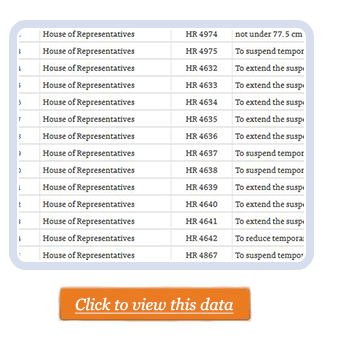So-called “tax expenditures” are special provisions in the tax code that reduce the taxes of a specific group of taxpayers who meet certain criteria. These special exemptions will cost the federal government trillions of dollars over the next few years. In fact, the total budgetary impact of tax expenditures is roughly equal to the amount Congress appropriates in discretionary spending each year, roughly $1 trillion.
 Tax expenditures are similar to direct spending because they are used by Congress as a means of accomplishing budget policy objectives. They differ from direct spending in important ways. Unlike discretionary spending, which is debated and approved by Congress each fiscal year, tax expenditures exist for multiple years or even indefinitely, unless or until Congress removes or alters them. In this way, tax expenditures are similar to entitlement programs like Social Security because their costs are based on formulas that rarely change. Also, because tax expenditures depend on the level of taxes owed by the targeted taxpayers, the total cost to the federal treasury can be difficult to estimate from year to year.
Tax expenditures are similar to direct spending because they are used by Congress as a means of accomplishing budget policy objectives. They differ from direct spending in important ways. Unlike discretionary spending, which is debated and approved by Congress each fiscal year, tax expenditures exist for multiple years or even indefinitely, unless or until Congress removes or alters them. In this way, tax expenditures are similar to entitlement programs like Social Security because their costs are based on formulas that rarely change. Also, because tax expenditures depend on the level of taxes owed by the targeted taxpayers, the total cost to the federal treasury can be difficult to estimate from year to year.
Tax expenditures are one area Congress is considering reforming as part of an overhaul of the federal tax code. A brief description of some of the tax expenditures TCS has recommended repealing as part of a solution to our long-term fiscal challenges can be found in our report, “Sliding Past Sequestration: $2 Trillion in Common Sense Cuts to Avoid the Fiscal Cliff.” Also see “Green Scissors 2012” for a discussion of cutting tax expenditures in different sectors, especially the energy sector. A more extensive description of tax expenditures is also available from the Senate Budget Committee.
The tax expenditure estimates for fiscal years 2012-2017 presented in this data set were prepared by the staff of the Joint Committee on Taxation for the House Committee on Ways and Means and the Senate Committee on Finance, in consultation with the staff of the Office of Tax Analysis in the Department of the Treasury. Tax expenditures presented here are only those that are part of the income tax – they do not include exceptions, exclusions, or credits from other Federal taxes such as excise taxes, employment taxes, or estate and gift taxes.
The General Accounting Office (GAO) has criticized tax expenditures because they:
-
can contribute to mission fragmentation and program overlap, creating the potential for duplication;
-
may be ineffective at achieving their social or economic purposes;
-
are effectively funded before discretionary spending is considered;
- may or may not be subject to congressional reauthorization.
GAO further states that: “reductions in revenue losses from eliminating ineffective or redundant tax expenditures could be substantial … GAO believes that tax expenditure performance is an area that would benefit from enhanced congressional scrutiny as Congress considers ways to address the nation’s long-term fiscal imbalance.”
Footnotes in data:
[1] Reflects legislation enacted by January 2, 2013.
[2] Does not include provision that permits look-through of payments between related foreign corporations.
[3] Estimate includes an outlay to State and Local governments. For the purposes of this table outlays are attributed to individuals.
[4] See extended footnote in original report.
[5] Positive tax expenditure of less than $50 million.
[6] In addition to the amounts above, the excise tax credit for alcohol fuel mixtures results in a reduction in excise tax receipts of $1.6 billion over fiscal years 2012-2016, and less than $50 million over fiscal years 2013-2017.
[7] Includes bonus depreciation and general acceleration under MACRS.
[8] Estimate includes amounts of employer-provided health insurance purchased through cafeteria plans and employer-provided child care purchased through dependent care flexible spending accounts. These amounts are also included in other line items in this table.
[9] Estimate does not include effects of changes made by the Emergency Economic Stabilization Act of 2008.
[10] Estimate includes employer-provided child care purchased through dependent care flexible spending accounts.
[11] In addition to the general charitable deduction, the tax expenditure accounts for the higher percentage limitation for public charities, the fair market value deduction for related-use tangible personal property, the enhanced deduction for inventory, the fair market value deduction for publicly traded stock and exceptions to the partial interest rules.
[12] Estimate includes employer-provided health insurance purchased through cafeteria plans.
Acronyms in data:
COBRA: Consolidated Omnibus Budget Reconciliation Act
FICA: Federal Insurance Contributions Act
IRS: Internal Revenue Service
MACRS: Modified Accelerated Cost Recovery System










